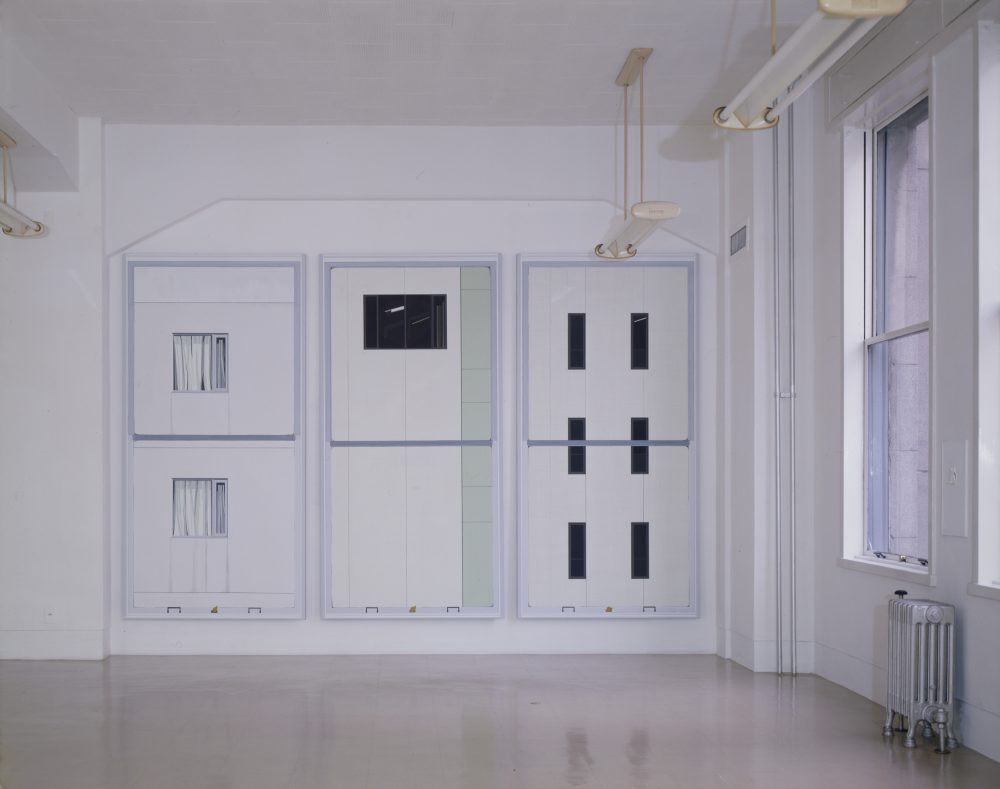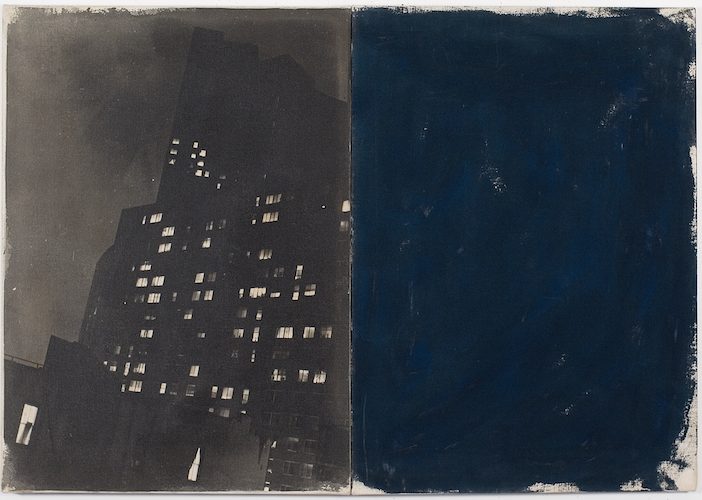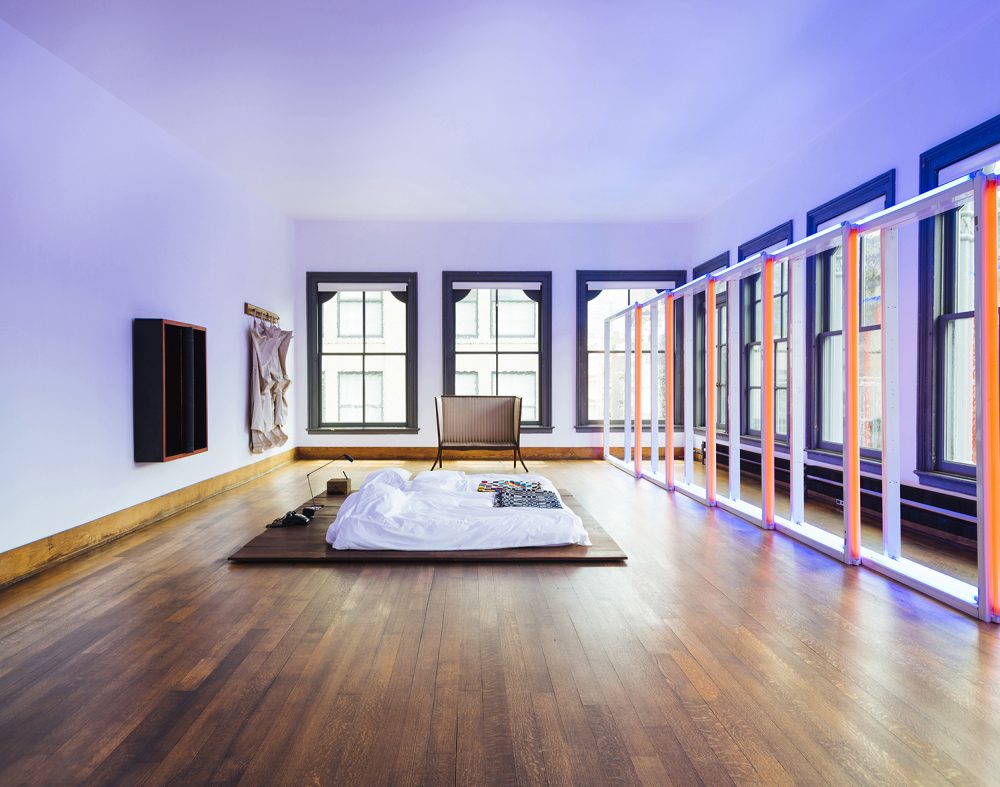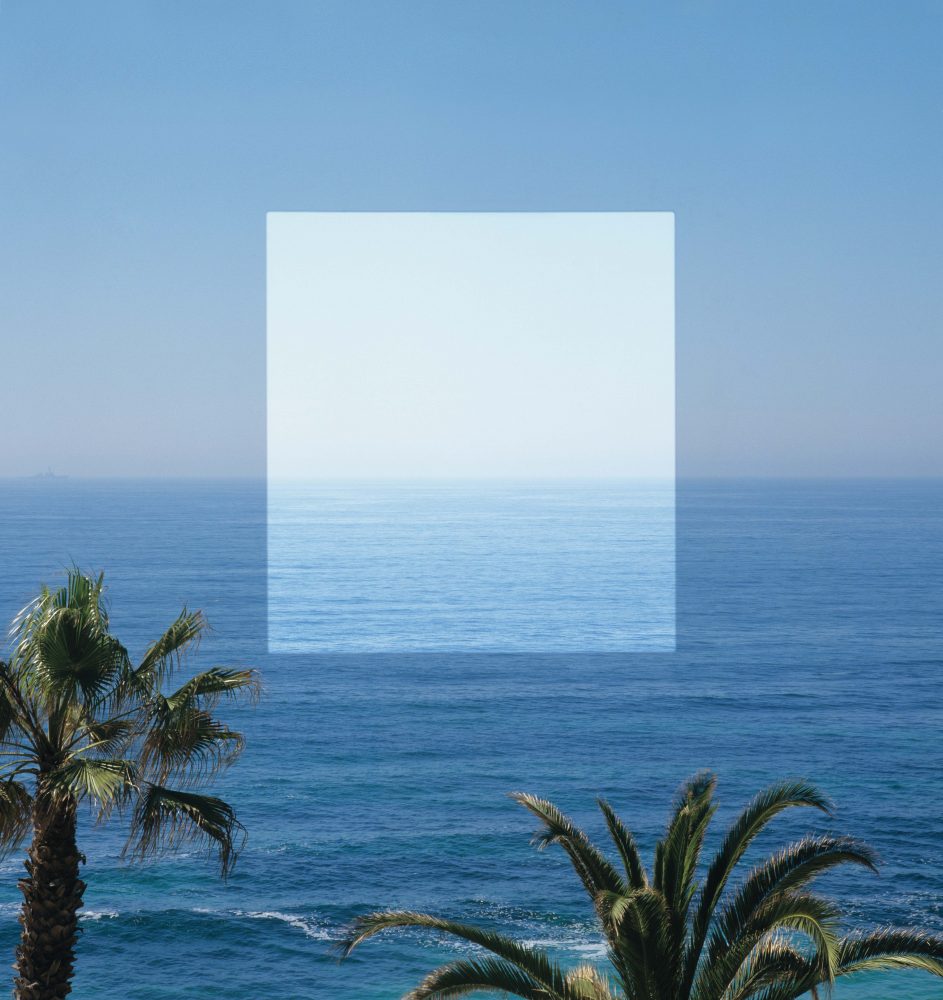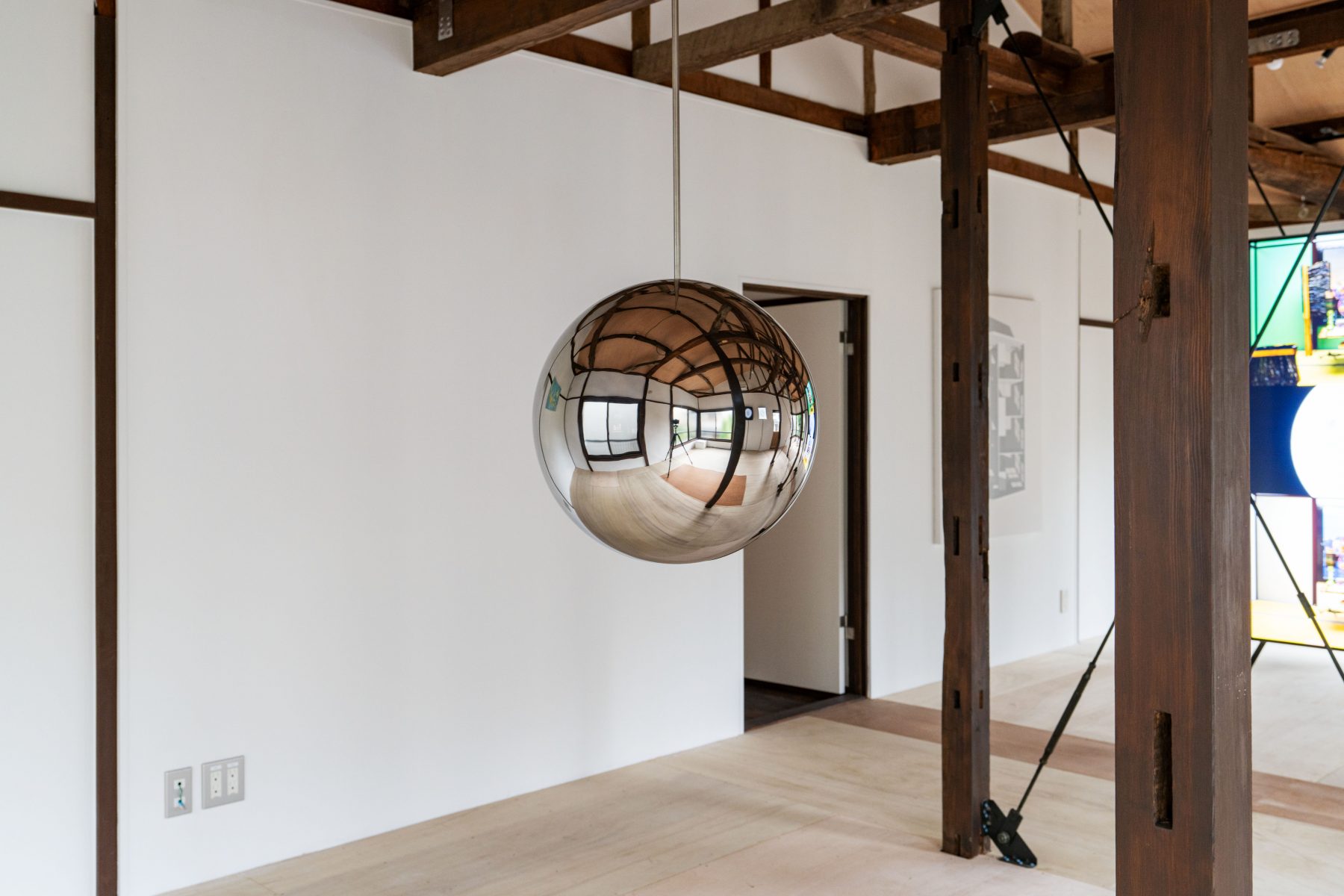
Windows: Overlapping and passing through
25 Mar 2024
- Keywords
- Art
- Columns
- exhibition
Why wasn’t it a window? I organized an exhibition called Medium and Dimension: Liminal and wrote a text for the exhibition catalogue entitled Apartment: Regarding walls and doors, or time and space. A wall is a metaphor for irreversible time, while a door is a metaphor for navigable space. So then, wouldn’t a window, the combination of those elements, have been a better choice? A window is a wall in the sense that it cannot be passed through, and a window is a door in the sense that you can pass through it if you choose to do so. A window is an ambiguous thing.
The Liminal exhibition was held in 2022 at Kakinokisou (The Persimmon Tree House), a wooden apartment building in Kagurazaka, Tokyo. The exhibition spanned the boundaries of time and space that existed both before and after this building was renovated. Kakinokisou was built in 1966 and previously used as a rental apartment complex. Since 2016, the building was primarily used as an artist-in-residence facility. However, the pandemic made this unsustainable, and in 2022 it was renovated for tenant space use.
Before it was renovated, the building had 12 rooms, each one the size of 4.5 tatami mats. Since this was a building where 12 people could live at one time, we invited a group of 12 artists to exhibit their work in each of the 12 rooms. When the building was renovated, the walls between the rooms were knocked down to create an open tenant space layout that we used to hold the group exhibition. All visitors were given a guidebook which contained photos of the 12 exhibition rooms before the renovation work along with a diagram of both the new and old floorplans.
The curatorial intent was to open up liminal time and space between past and present: between what disappears and appears, as well as between what changes and stays the same. Before the building was renovated, each room had its own window. After the renovations, some of those windows were turned into fixed windows, but the overall number remained the same.
Why wasn’t it a window? This question was passed along to me by Toshiharu Suzuki through the “Bridging Windows” series of essays, and is not unrelated to the fact that Takuro Tamayama’s name appeared at the end of that text. (It’s possible that what follows is also in some way connected to Tamayama’s Something Black, an installation work where he covered the windows of the Mori Art Museum with a pure red film and arranged a series of black-painted structural objects into architectural forms, almost like giant pieces of furniture.) The most recent event that connected the three of us was this Liminal exhibition.
-
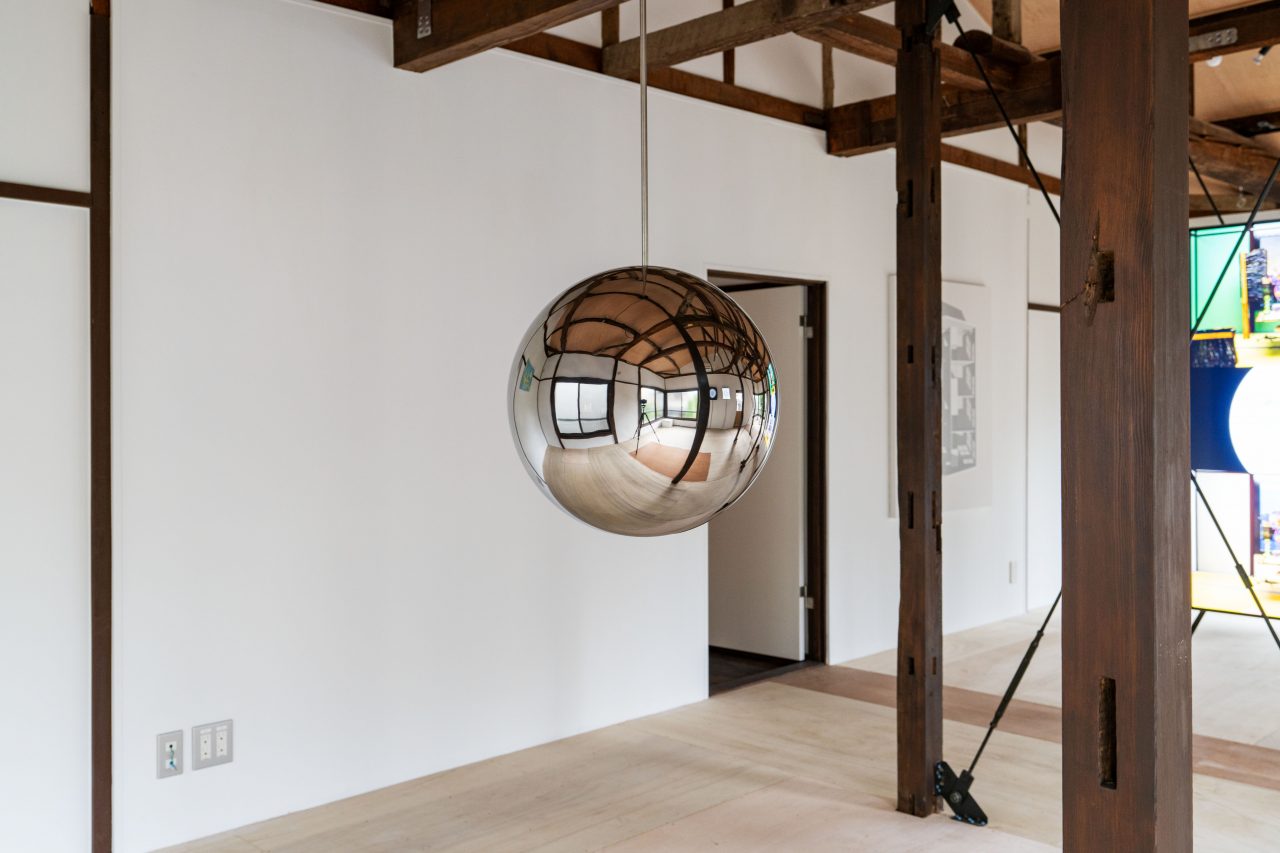
Installation view of Takuro Tamayama’s M.B. (2022) from the Medium and Dimension: Liminal exhibition held at Kakinokisou in 2022
Photograph by Takaaki Akaishi
Tamayama was a participating artist in Liminal, and installed a large spherical mirror that rotated almost imperceptibly by means of a motor. This was then suspended from a beam in the pre-renovated 4.5-mat room, and again in the same location after it was transformed into a wider tenant space. Installing this spherical mirror in the exact same location both pre- and post-renovation enabled it to simply rotate and reflect the space, unconcerned with the changes that occurred around it. Now that I think about it, windows were reflected in the surface of this work as well.
I asked Suzuki to contribute to the Liminal catalogue. His essay was entitled, That’s Austerlitz Station. Amnesia | The Battle of Austerlitz. Take me there: Ginata-readings of curation and multiple, versatile umwelten. This title refers to Marcel Duchamp’s play on words, where “La bagarre d’Austerlitz (The Battle of Austerlitz)” becomes “Là-bas, gare d’Austerlitz (That’s Austerlitz station),” and “M’amenez-y (Take me there)” becomes “Amnésie (Amnesia)” through the rhyming in each of the respective phrases. In 1921, Duchamp created The Brawl at Austerlitz (La bagarre d’Austerlitz), a piece where the outside layer is a brick wall and the inside layer is a wooden door. Best of all, transparent glass is set between the two layers. It is, in other words, a window.
A window allows light and wind, as well as a person’s gaze, to pass through it. It does not allow the body to pass through. If you were to straddle a window frame, and supposing there was a place to land on the other side, you could pass through the window. But then it would become more like a door. That’s why a window is a different type of boundary compared to one indicated by the word liminal, which comes from the word “limen” in Latin, meaning threshold or entrance.
The window in Ducamp’s The Brawl at Austerlitz is fixed, so there is no way to pass through. Just as Alberti defined painting as “an open window (finestra aperta),” and compared it to transparent glass, so too does Duchamp overlay painting and windows. However, he reverses the relationship between the painting and the window, as if choosing a ready-made. In typical fashion, Duchamp said that, instead of being considered a painter, he “would have liked, on this occasion, to have been thought of as a fenêtrier (window maker).” According to linguist Yasunari Ueda, the root of finestra and fenêtre, “window” in Italian and French respectively, comes from the Latin “fenestra,” which means an opening or a hole in a partition or castle wall.
The “window-maker” Duchamp created another window 1 year prior to The Brawl at Austerlitz. However, the “hole” in this window has been filled. He chose the English title Fresh Widow for this piece, a miniature French window replica created by a carpenter at Duchamp’s request. Duchamp then covered the glass in this window with black leather, creating a play on words with the title Fresh Widow. The emerald green window frame of this piece, and the black landscape beyond, recalls Manet’s Balcony (1868-69), while also referencing the same French window motif from Matisse’s French Window at Collioure (1914).
The black windows in both French Window at Collioure and Fresh Widow have been linked to war. In 1905, Matisse painted a brilliant landscape seen from a window entitled Open Window, Collioure. He painted this same window in Collioure in the south of France in early September 1914, one month after the outbreak of the First World War and most likely left it unfinished when he returned to Paris in October of the same year. The world outside the window in French Window at Collioure is painted completely black.
Duchamp insisted that the black leather covering his window should be polished, like shoes, with wax, but beyond that, the black leather appears to be like a covering that prevents light from leaking outside during an air raid. In order to hide from the Zeppelins that filled the skies above wartime Paris, it’s said that half of the shopping streets would close at 6pm, while all other light sources, including neon signs and other emergency lighting, would be completely extinguished at the first air raid siren. Another reading of this piece comes from the title, Fresh Widow, which connects to the blackness of the window itself. This can be seen as a lament for the death of Duchamp’s older brother, Raymond Duchamp-Villon, during World War 1, and a way to mourn with his widowed sister-in-law Suzanne. By extension, we should also consider that this piece was perhaps meant more broadly to comfort the widows of French soldiers whose husbands had been taken from them during the war. The windows of Manet, Matisse, and Duchamp overlap in their emerald green frames and the black of the space beyond.
I’d also like to delve more deeply into the black leather that covers this window. From 1915 to 1923, Duchamp worked on a large composition on glass entitled The Bride Stripped Bare by Her Bachelors, Even, also known as The Large Glass. It’s suspected that this glass artwork was made as a type of portable window, one that could incorporate various landscapes as it moved. Paintings have a relationship between ground and figure, in other words, between this side and that side. Duchamp, however, used transparent glass as a way to free himself from having to depict a background. With glass, the background depicts itself. This relationship between the black planes of Fresh Widow and the transparent glass in this work reminds me of Chocolate Grinder (No. 2) from 1914. In this piece, Duchamp erases the background by painting it completely black. In addition, the image of this chocolate grinder was later relocated to transparent glass, that is, to the center of The Large Glass. Considering this gesture, it’s possible that Duchamp found it necessary to put black leather over the normally transparent glass of a window in order to demonstrate that there is no landscape on the other side.
It’s worth mentioning that the Fresh Widow window can actually be opened, even though it does not seem possible to do so. In other words, a two-dimensional landscape opens up onto a three-dimensional one. Does this mean it’s possible to pass through the window’s pitch-black darkness? French windows swing open on both sides and have frames that stretch from the ceiling to the floor, so they’re almost like doors. But Fresh Widow is a miniature version of these French windows, so when it opens, it’s much more reminiscent of a metaphor for an eye.
Liminal was an exhibition that moved between the walls of time and the doors of space, but there was work in the show that used windows as surfaces, namely Nozomi Suzuki’s Other Days, Other Eyes series. For these pieces, Suzuki removed the existing window panes from the building, photographed the landscape visible from the windows, and then printed an exposure of the photographic images onto the removed window panes. One of the transferred images among this series called Other Days, Other Eyes: Windows from the East Side of the Second Floor of the Kakinoki Apartment (night) is a nighttime landscape, so the glass is covered with a black image. This black window is reminiscent of Duchamp’s Fresh Widow. In actuality, Nozomi Suzuki photographed an afternoon landscape from the 2nd floor window of Kakinokisou in 2016 which she turned into an artwork in 2017. Given this, I requested that she take a photo at night from the same window for this exhibition. I did so because I was thinking about these windows, installed in this wooden apartment building built after World War 2. Thinking about, in other words, a Japanese window of black glass with a night scene exposure printed onto it, and a French window covered in black leather. I did so because I was seeking to overlap Duchamp’s window with Nozomi Suzuki’s.
Just as the window panes in Nozomi Suzuki’s work are filled with the starlight that has traveled thousands of light years to reach us today, so too is the image itself of a night sky from a time in the past. This scenery is fixed, in the way that the light from the past is fixed. For this reason, removing a window pane from an existing building and turning it into an artwork before returning the same window pane to the place where it was originally installed quite literally overlaps the landscape of the past with the landscape of the present, where the overlap of time and space occurs at a delay through the physical material of the work. This occurrence is fairly obvious if one considers the characteristics of photography, but in this particular case, the overlap of a two-dimensional landscape with a three-dimensional one becomes possible thanks to the transparency of the windowpane. The Russian word “окно” (window), has its roots in the Latin word “oculus” (eye). The Large Glass has an area that resembles a peephole called “The Oculist Witness” (Témoins oculists). Thinking about it now, Duchamp called The Large Glass “a delay in glass.” The Large Glass was made over the course of 8 years before being abandoned in 1923. That makes this year, 2023, exactly 100 years since then. Despite the time that has passed, The Large Glass continues to inspire new interpretations regarding its meaning. In a way it is a large peephole, the equivalent of a window whose overwhelming amount of light continues to elude the eye.
-
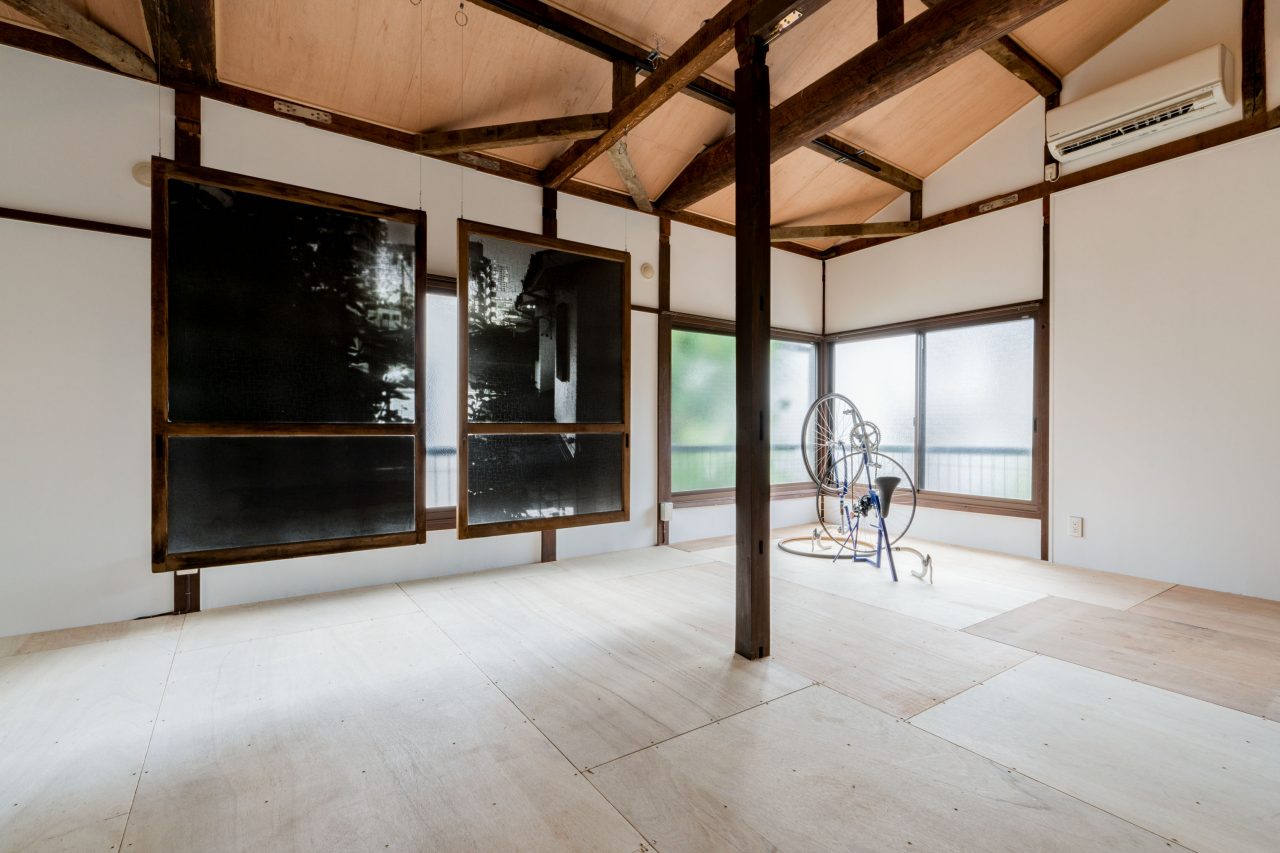
L: Installation view of Nozomi Suzuki’s Other Days, Other Eyes: Windows from the East Side of the Second Floor of the Kakinoki Apartment (night) (2022) from the Medium and Dimension: Liminal exhibition held at Kakinokisou in 2022
R: Reform (2013) by Kazuaki Yamane
Photograph by Takaaki Akaishi
Takuya Nakao
Takuya Nakao writes criticism on modern and contemporary art. In particular, he has been exploring the connections between living (or non-art) and creative practice from the perspective of chess, in which Marcel Duchamp was also engrossed. He is the author of Marcel Duchamp and Chess (Heibonsha, 2017) and co-author and editor of Sports/Art (Shinwasha, 2020). Selected writings include Reassessing Richter and 1960s Marcel Duchamp (“Gerhard Richter” Seigensha Art Publishing, 2022). Recent curation work includes Medium and Dimension: Apparition (Aoyama Meguro, 2023), Medium and Dimension: Liminal (Kakinokisou, 2022), and Another Diagram (T-House New Balance, 2023). He is a current part-time lecturer at Joshibi University of Art and Design, Tama Art University, Tokyo University of the Arts, Tokyo Institute of Technology, Rikkyo University, and Waseda University.

